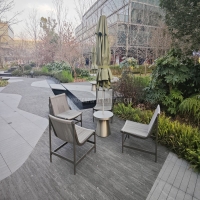Welcome to the website for landscape facilities products and knowledge.
How does the design of the trash can accommodate the disposal of greasy or oily waste?
The disposal of greasy or oily waste poses unique challenges in both household and commercial settings. Modern trash can designs address this issue through innovative features that prioritize hygiene, convenience, and environmental responsibility.
One key solution is the integration of grease-resistant materials. Many high-quality bins now use durable plastics or stainless steel with non-stick coatings, preventing oil absorption and simplifying cleaning. Some models even incorporate removable inner liners or disposable grease traps to isolate oily waste effectively.
For larger quantities of oily waste, specialized bins often include sealing mechanisms. Tight-fitting lids with gaskets prevent leaks and contain odors, while pedal-operated designs allow hands-free use to minimize mess. Commercial-grade models may feature built-in filtration systems to separate oils from solid waste, facilitating recycling or proper disposal.
Sustainable designs are also gaining popularity. Compostable bin liners made from plant-based materials can handle greasy waste while breaking down naturally. Some systems even integrate with municipal grease recycling programs, supporting circular economy principles.
Maintenance features further enhance functionality. Smooth, seamless interiors resist residue buildup, and many models include dishwasher-safe components for thorough cleaning. For outdoor use, rust-proof materials and drainage systems prevent oil accumulation.
By combining these design elements, modern trash cans transform greasy waste management from a messy chore into an efficient, eco-friendly process. Whether in home kitchens, restaurants, or industrial facilities, these innovations help maintain cleanliness while reducing environmental impact.
Related search:

Recommendation
Metal structure rattan chair without armrests for single person, with woven seat and backrest.